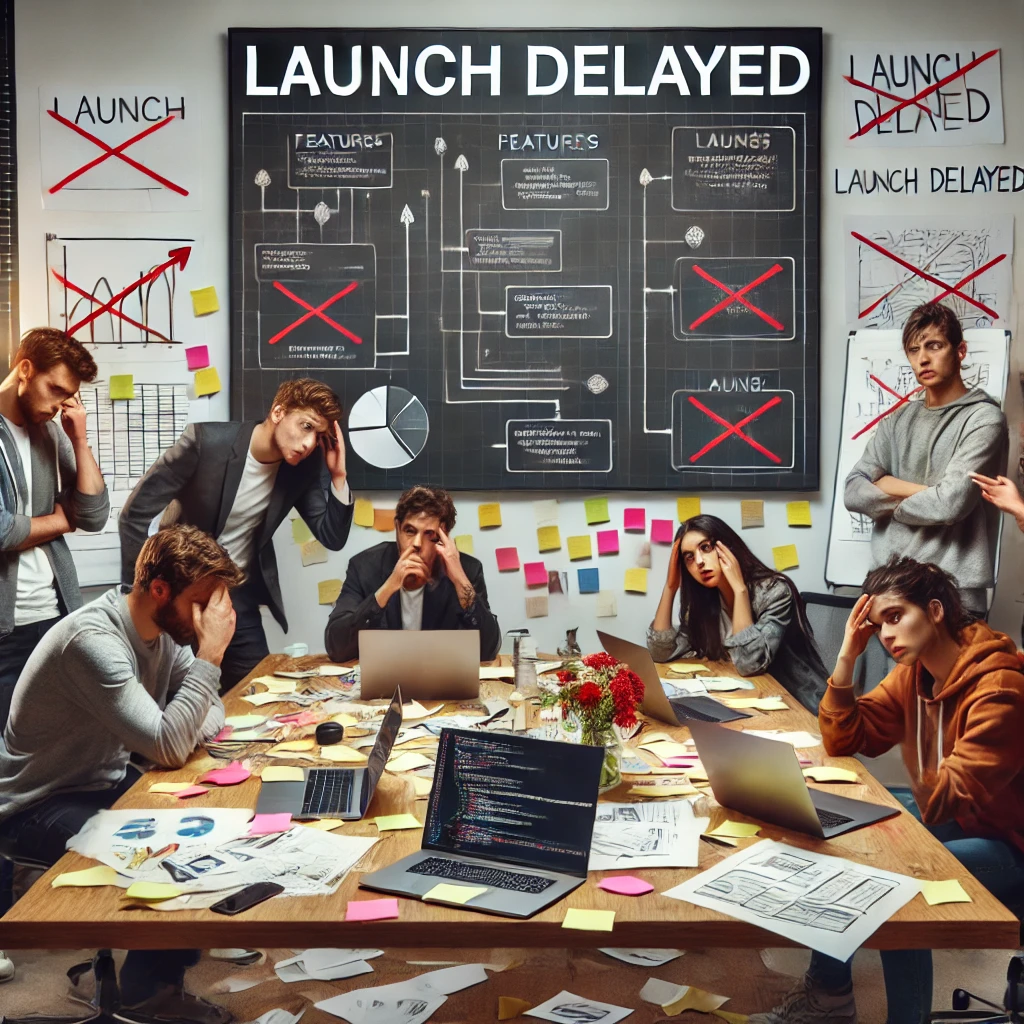Every startup begins with a vision—a groundbreaking idea that has the potential to disrupt industries, attract millions of users, and create a lasting impact. However, turning that vision into reality requires flawless execution, and that’s where most startups fail.
In today’s digital world, a startup’s website or web application is its most important asset. Whether it’s an e-commerce website development, SaaS platform, marketplace, or AI-powered tool, a startup's website is its first impression, marketing engine, and revenue-generating platform.
Yet, statistics show that 90 percent of startups fail, and one of the most overlooked reasons is poor web development decisions—choosing the wrong technology, ignoring user experience, underestimating security, or burning through the budget too quickly.

What This Blog Covers:
- The five most common web development mistakes startups make
- A real case study that reveals a million-dollar failure
- The right approach to building a scalable, secure, and user-friendly website
- FAQs to answer the most common startup web development questions
If you’re a startup founder, this guide will help you avoid costly mistakes, save thousands of dollars, and launch a high-performance digital product.
1. Jumping into Development Without a Clear Strategy
Why Startups Make This Mistake
Many startups rush into custom web development without a clear product strategy, roadmap, or market validation. They assume that "building first and refining later" is the fastest way to launch. However, without a clear plan, development costs skyrocket, timelines extend, and the final product often fails to meet user needs.
The Consequences of No Strategy:
- Frequent Changes & Delays: A lack of structured planning leads to endless revisions and missed deadlines.
- Feature Bloat: Too many unnecessary features increase costs and complicate the user experience.
- Market Confusion: Without a well-defined purpose, users struggle to understand the product’s value.
How to Avoid This Mistake:
- Conduct Market Research: Validate your idea by gathering real feedback from potential users.
- Develop a Product Roadmap: Define your core features, goals, and long-term vision.
- Launch an MVP (Minimum Viable Product): Start with a basic version of your product, then iterate based on user feedback.
- Use Wireframes & Prototypes: Design your product before coding to visualize its structure and flow.
- Follow Agile Development: Break development into phases with regular testing and improvements.
2. Choosing the Wrong Technology Stack
Why This Happens
Your technology stack (the programming languages, frameworks, and tools you choose) determines your startup’s performance, security, and ability to scale.
Many founders make poor tech decisions by:
- Following trendy web development AI tools instead of choosing what fits their needs.
- Using outdated frameworks, making future scaling and hiring developers difficult.
- Choosing cheap but unreliable tech solutions, leading to frequent breakdowns.
The Consequences of a Poor Tech Stack:
- Slow website performance: Drives users away.
- Scalability issues: Prevent growth when traffic increases.
- Security vulnerabilities: Expose sensitive data and weaken user trust.
How to Choose the Right Tech Stack:
- Use modern, scalable technologies: React.js, Next.js for the frontend and Node.js, Django, or Laravel for the backend.
- Select a reliable database: PostgreSQL or MongoDB that can scale with your business.
- Host on cloud platforms: AWS, DigitalOcean, or Vercel to ensure speed and reliability.
- Implement security best practices: SSL encryption, firewalls, and regular vulnerability testing.
By choosing the right tech stack from the start, your startup will be set up for long-term success and scalability.

3. Ignoring User Experience (UX) & Mobile Optimization
Why Startups Overlook UX
Many startups focus only on features and neglect user experience (UX), responsive web design, and mobile app development design. However, users don’t care about how many features you have—they care about how easy and enjoyable your product is to use.
Case Study: Quibi – A UX Disaster
Quibi, a $1.75 billion streaming startup, failed within six months due to poor UX choices, such as:
- A confusing user interface that frustrated users.
- No social sharing features, making it harder to spread content.
- Forcing users into a mobile-only mode, limiting accessibility.
How to Build a UX-First Web Experience:
- Prioritize Simplicity: Keep navigation clean and avoid unnecessary complexity.
- Optimize for Mobile-First: Over 60 percent of users browse on mobile devices.
- Conduct A/B Testing & Heatmaps: Understand how users interact with your website and refine it accordingly.
- Improve Page Load Speed: Users leave if a site takes more than 3 seconds to load.
A well-designed UX is the difference between retaining customers or losing them to competitors.
4. Underestimating Performance, Security & Scalability
Why Startups Make This Mistake
Startups often cut corners on performance and security due to budget constraints. However, this can be disastrous in the long run.
Consequences of Ignoring Security & Performance:
- Slow websites: Result in high bounce rates and lost revenue.
- Cybersecurity attacks: Lead to data breaches and loss of customer trust.
- Scalability issues: Make it difficult to handle traffic spikes.
How to Ensure High Performance & Security:
- Use a Content Delivery Network (CDN): Improve page speeds globally.
- Run Regular Security Audits: Detect and fix vulnerabilities before they become a problem.
- Implement Caching & Lazy Loading: Reduce server load and speed up website response times.
- Use Cloud Hosting Solutions: Ensures 99.9 percent uptime and seamless scaling.
5. Burning Through Budget Before Completion
Why Startups Run Out of Money
Many startups fail to budget properly and run out of funds before their product is market-ready.
Common Budgeting Mistakes:
- Developing too many features too soon.
- Underestimating maintenance, hosting, and security costs.
- Neglecting marketing and customer acquisition.
How to Stay on Budget:
- Start with an MVP: Build gradually to manage costs.
- Break costs into phases: Manage spending wisely.
- Budget for ongoing expenses: Plan for updates, security patches, and cloud hosting.
Conclusion: Building a Future-Proof Web Presence
Your startup’s success is deeply tied to your web development strategy. Avoiding common mistakes like poor planning, weak UX, bad tech choices, and security oversights can be the difference between failure and sustainable growth.
Here’s a quick recap of how to set up your startup for success:
- Plan before building: Always create a clear roadmap, research your market, and test before coding.
- Pick the right technology: Choose modern, scalable, and secure tools that grow with your startup.
- Prioritize UX: A great user experience will keep customers engaged and drive conversions.
- Focus on performance and security: Speed, scalability, and security should be built-in from the start.
- Be smart with your budget: Avoid feature overload, launch an MVP first, and scale wisely.
If you avoid these pitfalls and take a structured approach to web development, your startup will have a much higher chance of success.

How KSoft Helps Startups Build for Success
- Scalable, High-Performance Web Development: Built with modern frameworks like Next.js, React, and Node.js.
- Security-First Approach: Advanced protection against cyber threats and vulnerabilities.
- MVP Development: Affordable solutions for quick market validation.
- User-Centric Design: Seamless UX/UI that prioritizes ease of use and engagement.
FAQs – Answering Your Startup Web Development Questions
How much does web development cost for a startup?
An MVP typically costs $5,000 – $30,000, while a full-scale web app may exceed $100,000.
How long does it take to develop a startup website?
MVPs take 6-12 weeks, while a full web app can take 6 months – 1 year.
What’s the biggest web development mistake startups make?
Not validating their idea before investing heavily in development.
Want to avoid costly mistakes? Contact KSoft today and build the future!
Next in the Series: How to Market Your Startup Website & Drive Traffic That Converts



